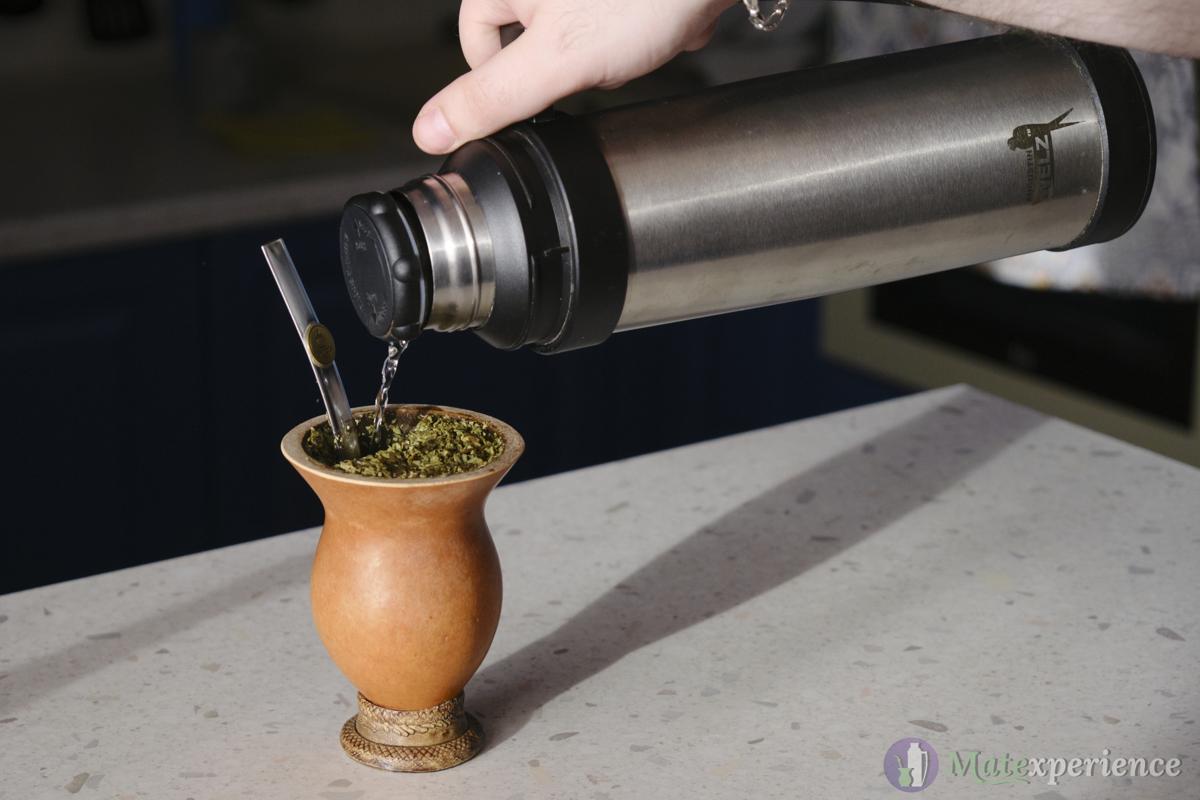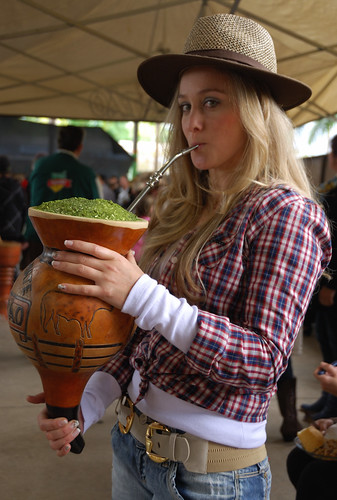Why Measure Yerba Mate Durability in Refills | Matexperience (original) (raw)
My cookies options
Functionality cookies
These cookies are used to provide you with a more personalized experience on our website and to remember choices you make when you use our website.
For example, we may use functionality cookies to enable commenting functionality.
Statistics cookies
These cookies are used to collect information to analyze the traffic to our website and how visitors are using our website.
For example, these cookies may track things such as how long you spend on the website or the pages you visit which helps us to understand how we can improve our website site for you.
The information collected through these statistics and performance cookies do not identify any individual visitor.
Read more about exact cookies we use in our Privacy Policy
Published on May 10, 2022
6 minutes to read
If you make a purchase through links in this article, I get a small commission at no cost to you. Learn more

I often get a question from readers — why in my reviews I am measuring durability of yerba mate in refills instead of liters of water, like most other reviews? To answer that we’ll need to understand why the majority of reviewers decided to measure it in liters in the first place, pros and cons of that approach and how did I eventually decide to use the number of refills as the ultimate quantifier for yerba mate durability.
An argument for measuring durability in liters of water (aka cycle)
Each mate starts off with water preparation. If you want to make a traditional hot mate, first thing you’ll do is pour some water intokettle in order to heat it up. So the number one decision that you have to make is to determine how much water you’ll need.Longer mates will require more water than short mates. You’ll likely know how much water yourthermos andkettle can hold. Probably, most of your gourds, if not every, are average-sized, about 150-200ml. In that case it is absolutely reasonably and practically to measure the durability of your favorite yerbas by the amount of water they require.
Want a shorter mate, like Liebig Original? You’ll heat up less than a liter of water and pour it in you standard 1L thermos. Are you in a mood for longer mate, like Cruz De Malta Tradicional? You’ll heat up more water and maybe even whip out alarge 1.5L or2L thermos for that occasion. No need for extra calculations. In the beginning of my mate journey I used the same logic and started to categorize yerbas by the amount of water they can last. However, after I started to build up my gourd collection I ran into a problem with that simple approach.
The size of the gourd is not taken into account
Let’s take this silly huge cuia as an extreme example - how many liters of water do you think it will require? Looks like it will take a whole thermos just for a single refill! Luckily, I didn’t need to get myself such a giant cuia to realize that size of the gourd must be taken into account when measuring yerba mate durability — it was actually the opposite.
Long time ago, shortly after I started drinking mate, I saw a cute little calabash gourd in an artisan store. I loved the quirky “Argentina” engraving as well as the overall look of it and the way in sat snugly in my hand, so I could not resist buying it. Excited by the novelty of a brand-new gourd, I used it almost every day for the first few weeks. However, I noticed that compared to mates that lasted precisely 1 liter of water in my average-sized gourd, after finishing drinking the same mate out of my new little gourd, I was constantly left with a noticeable amount of water in my thermos.

Calabash Gourd With Metal Ring
Available from multiple sellers

2 Offers Available:
Free worldwide shipping on qualified orders.
Use code MateExperience10 for 10% off the whole order!
It made sense — smaller gourd holds less yerba mate, which needs less water for a balanced infusion. I found the difference in the amount of water to be quite significant to be ignored, otherwise I would have had a wrong impression about mates that I drank from my small gourd. I verified it again, this time in my biggest Brazilian cuia, which, as I expected required more water for the same yerba mate. That’s when I got the idea of measuring durability of yerba mate by number of refills, in order to classify it in a more precise and gourd-agnostic way.

Cuia for Chimarrão
Available from multiple sellers

2 Offers Available:
10% off the whole order! Worldwide shipping available.
Free shipping to EU and UK on orders over PLN 120.
How measuring durability of yerba mate in refills is more precise?
I made the same mate again in my smallest, average and biggest gourd, this time counting refills. The result was obvious — the amount of refills was exactly the same in each scenario. Why is that? Well, for a traditional mate we need to fill about 2/3 of the gourd with yerba, leaving about 1/3 of the space inside for water. The ratio of yerba to water is always the same in any gourd, while amount of yerba and water change relatively to the size of the gourd. Thus, the amount of refills stays the same for different gourds, and the total amount of water needed for complete mate session will depend on the size of the gourd.
Bonus point is that to me as a reviewer it is really easy then to simply count refills for each yerba mate reviewed and then assign it a durability category based on the number of refills. In my relative experience with different yerba mate brands, less than 15 refills will classify as a short durability, 15 to 25 refills is considered to be a moderate durability, and more than 25 refills to me is a long mate. Precisely counting the amount of water on the other hand seems like a highly cumbersome task, especially if I have some water left in thermos after finishing drinking session.

An argument against counting refills
Despite the fact that counting refills IMO is a more precise way of measuring yerba mate durability, I am fully aware that it is not a perfect solution. If you think about it, the number of refills in and of itself does not mean anything, and requires to be put into context, i.e. classifying it as a short or long durability, thus giving the reader an idea of the amount water such yerba mate can last, relatively speaking. Same as with not giving scores and ratings in my reviews, I rely on the reader to be smart and make their own decisions, including how much water will they need for a given yerba mate based on the size of their own gourd and experiences that they had with it in the past.
***
Who knows, maybe for the sake of clarity and practicality I should add to my reviews an approximate amount of water needed for a particular yerba mate in an average gourd, alongside with the number of refills — let me know in comments if that is a good idea.
Anyway, I hope this article clears up why my reviews are a little different compared to the others. Do you personally care about yerba mate durability? How do you measure it, what to you is the most convenient and practical way?
Get access to new content as soon as it is published and receive exclusive offers, deals and discounts on yerba mate and related products! You can unsubscribe anytime.
Gourd in Portuguese. Term cuia is used to describe relatively big and thick gourds made from a top part of calabash, which are used as a vessel to drink chimarrão from. Also see porongo.
Characteristic, which is used to describe the amount of refills that yerba mate can take before becoming lavado, or washed out. Usually, durability can be classified as short, moderate and long.
A vessel used for drinking mate traditionally. Usually it is made from a real dried calabash gourd, or calabaza in Spanish, hence the name. Today the term gourd is used not only to describe a calabash vessel, but any other cup from which mate is being drank (wooden, metal, ceramic, etc.).
Pronounced [MAH-teh]. Traditional South American caffeine-rich infused drink, very popular in Argentina, Paraguay, Uruguay and Southern Brazil (the term chimarrão is used there more often). It is prepared by steeping dried leaves of yerba mate in the gourd. Sometimes the gourd itself is referred to as mate.
Pronounced [YER-bah MAH-teh] (or [SHER-bah MAH-teh] in Rioplatense Spanish). Also known as Ilex paraguariensis, a holly plant natively grown in South America, particularly in Northern Argentina, Paraguay and Southern Brazil (the term erva mate is used there more often).Yerba mate is used to make a beverage known as mate in Spanish, or chimarrão in Portuguese. Often, the term yerba mate is used to describe not only a plant, but also a final product of grinding, drying and aging the plant.







